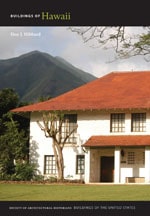
About three-and-a-half miles up Kuamoo Road and overlooking the Wailua River is the Saiva Siddhanta temple; a work in progress, its completion is expected in 2017. Over three-million pounds of white granite are being quarried and carved in Bangalore, India, for this Hindu temple designed in the traditional Chola style of South India. Quarrying commenced in 1990, and the stone is carved and shipped to Kauai on an ongoing basis. The ceremonial foundation stones were laid in 1995 and the concrete foundation was poured in 1999. When completed, this pilgrimage center will be the first handcarved all-stone Hindu temple erected in the United States. It will include thirteen-foot-high monolithic columns, a stone bell, eight lion-shaped pillars, and sandalwood doors. The temple will stand forty feet high and house a sacred, seven-hundred-pound quartz crystal that is said to be the largest known six-sided, single-pointed, natural, uncut crystal in the world. Currently this thirty-nine-inch-high crystal Sivalingam is housed on the monastic premises in the more modest Kadavul temple, which itself is architecturally engaging. This single-story, gable-roofed, lava-rock temple was constructed in 1973, three years after the monastery was established on this property. Outside the Kadavul temple, a copper-clad kodi maram (flag pole) serves as a supernatural polarity to the crystal Sivalingam within, harnessing a vortex of spiritual energies and purifying the karma of those who walk between the two. Beyond the kodi maram, a freestanding mandapam (gable-roofed pavilion) houses a sixteen-ton, black granite bull, Nandi, Siva's mount.
Black Italian marble graces the interior of the Kadavul temple, and a ridge-running skylight provides natural illumination. Beyond the crystal, the central shrine is dedicated to Siva Nataraja and contains a six-foot-tall, two-hundred-year-old, south Indian bronze statue of the Divine Dancer. Alcoves to the right and left house black granite images of the sons of Siva and Parvati: the elephant-headed deity Ganesha, worshipped as the remover of obstacles and the god of success and learning, and the peacock-riding Kartikeya, the destroyer of evil. All three altars have gold tile pedestals, which were made in Japan. The wood statue of Nada Budake, known for his powers to heal, is also temporarily housed in the temple, awaiting the rehabilitation of Lawai Shingon Mission.

